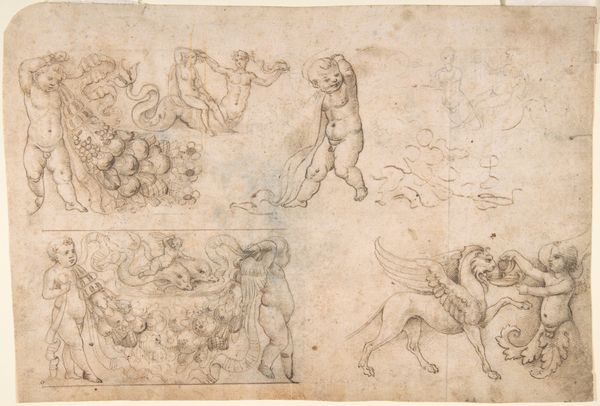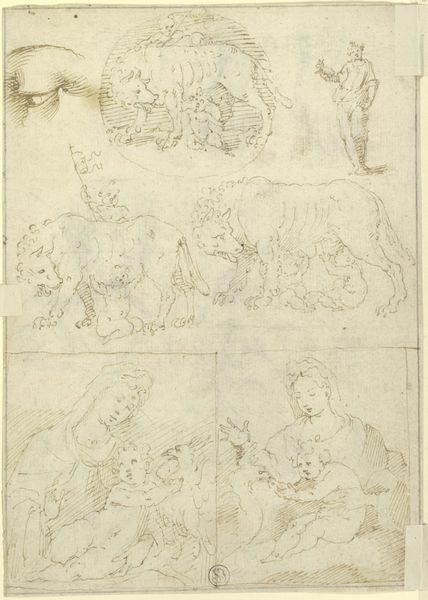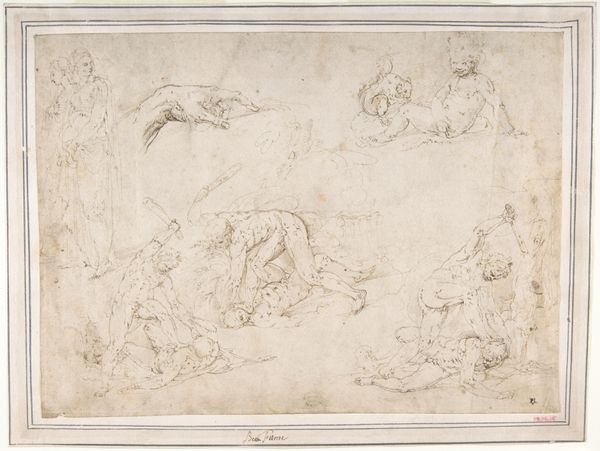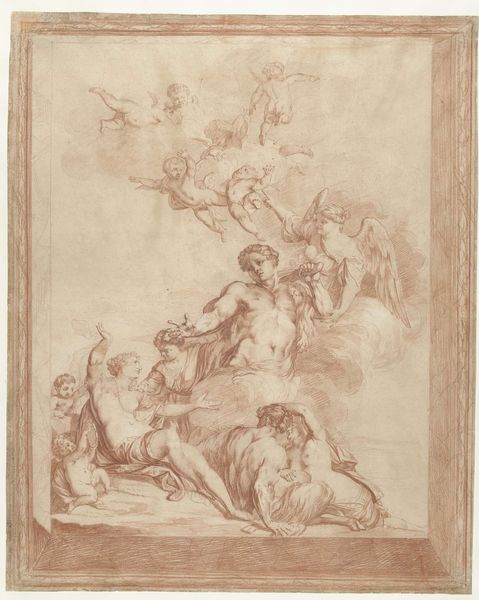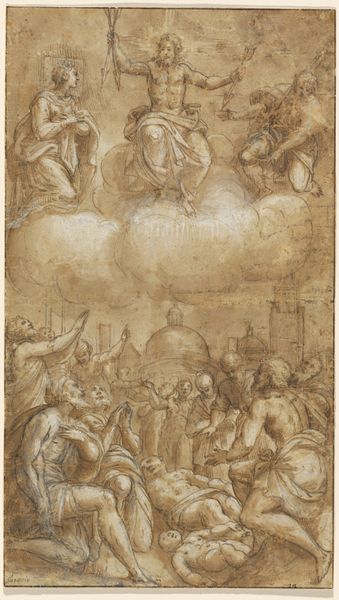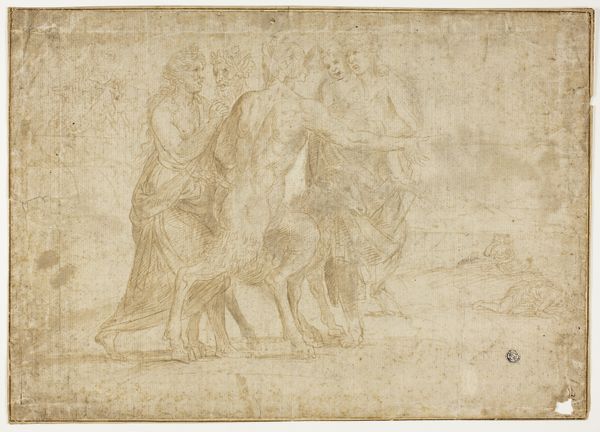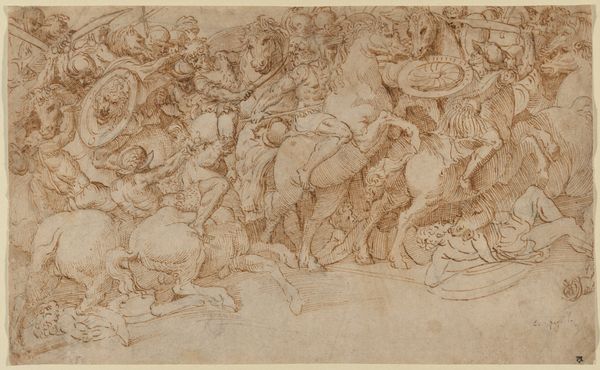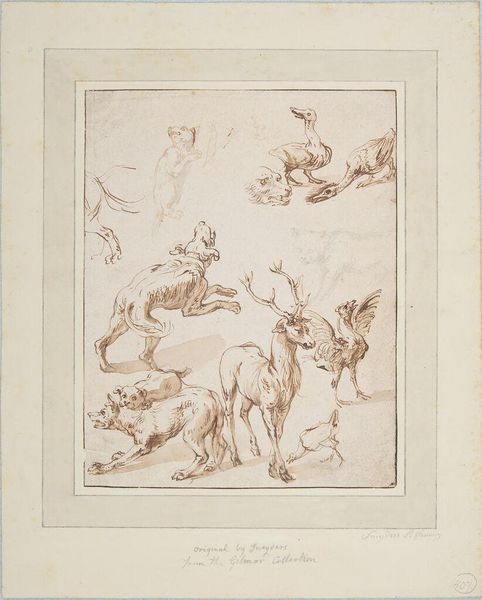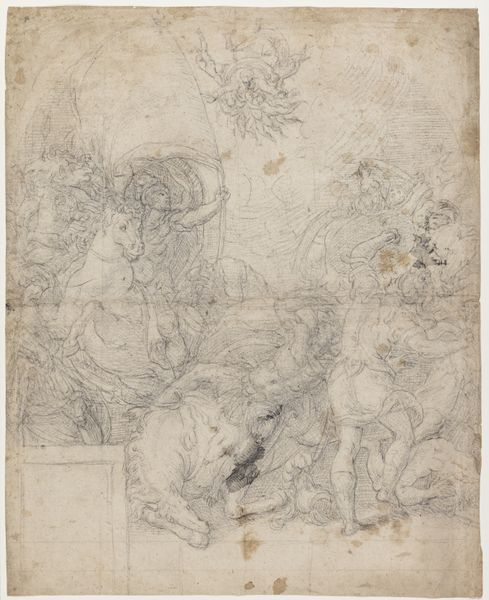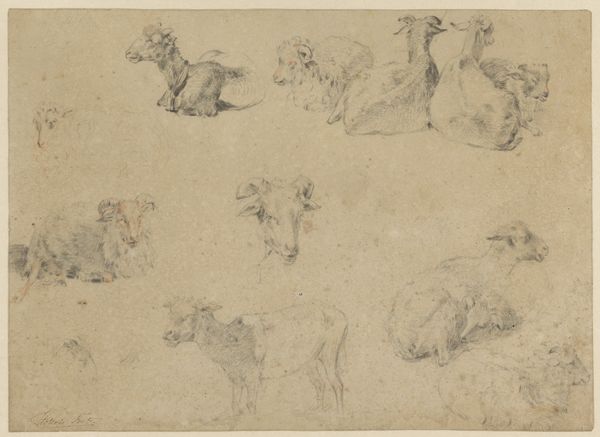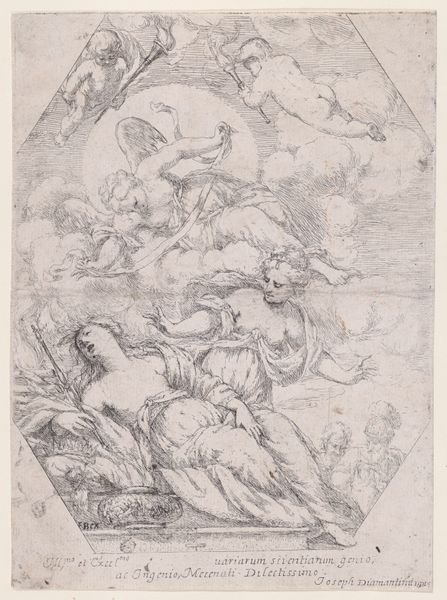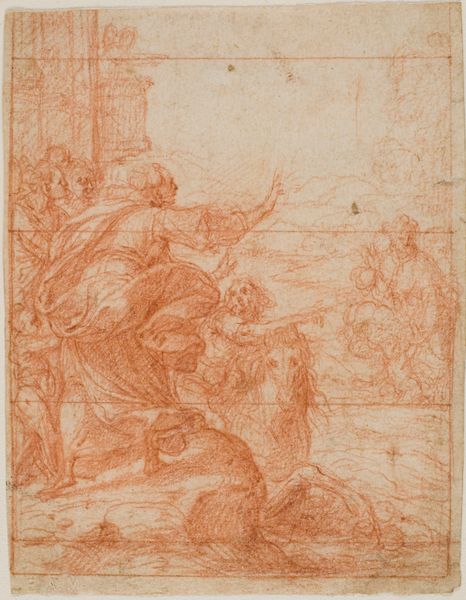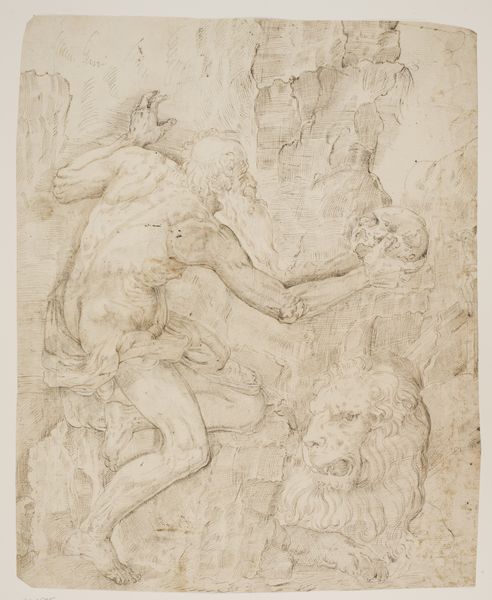
Studies after the Antique: The Fall of Phaëthon, Horses, Reclining Women with Children (recto); Studies after the Antique: An Altar or Urn, Lion Attacking a Horse (verso) 1474 - 1552
0:00
0:00
drawing, paper, pencil
#
drawing
#
figuration
#
paper
#
11_renaissance
#
pencil
#
horse
#
history-painting
Dimensions: 14-5/8 x 10-1/4 in. (37.2 x 26.0 cm)
Copyright: Public Domain
Curator: This is a sheet of studies by Amico Aspertini, created between 1474 and 1552. The drawing, done in pen and pencil on paper, showcases Aspertini's fascination with classical antiquity, now residing here at the Metropolitan Museum of Art. Editor: The immediate impression is chaos, yet controlled. There's a swirling energy in the Phaëthon scene, contrasted with the gentler, almost domestic studies of women and children. It is very busy on the page overall. Curator: Indeed. Aspertini was deeply engaged in the artistic and intellectual climate of Bologna, where there was significant interest in reinterpreting classical forms and narratives. The upper register illustrates the dramatic fall of Phaëthon, son of Helios, from his sun chariot—a popular subject in Renaissance art signifying hubris. Editor: I'm drawn to the positioning of Phaëthon, his fall seems quite defiant. It seems like the choice of representing women with children is less heroic and far more tender. Considering that the image references classical art, these studies become quite personal and contemporary. Curator: Exactly! Aspertini used drawing as a tool for investigating ancient sculptures and reliefs, appropriating classical motifs into his artistic vocabulary. By doing this, it’s like he's constructing a bridge between eras. What does this choice speak to contemporary audiences, as viewers and possible scholars? Editor: I feel invited to unpack power dynamics at play, and it creates dialogue that speaks to the dangers of unchecked ambition— Phaëthon’s story mirrors a wider socio-political discussion we’re still having today regarding leadership and responsibility. His “fall” can serve as a point of conversation surrounding accountability. Curator: These drawings reflect the public role of art in communicating moral and political messages within society at the time. The horses convey dynamic tension, highlighting human fragility in face of nature’s power. Editor: By bringing together "high" historical themes, like the fall of Phaeton, alongside more quotidian scenes of familial affection, it almost creates a disruption—it gives permission to situate classical themes within the experience of women, of people—making this form more immediate. Curator: It certainly presents the era's interpretation of masculinity in art. Aspertini demonstrates how one might be looking at these issues around public duty with private vulnerability. I think in our brief tour, we've come to a deeper, more empathetic way to view this era, looking beyond simple appropriation. Editor: Agreed, understanding what that means to consider classicism is so impactful today. This allows a deeper engagement with artistic ancestry, prompting reflection not just of how narratives were used, but whose narratives have the power to do the telling.
Comments
No comments
Be the first to comment and join the conversation on the ultimate creative platform.
